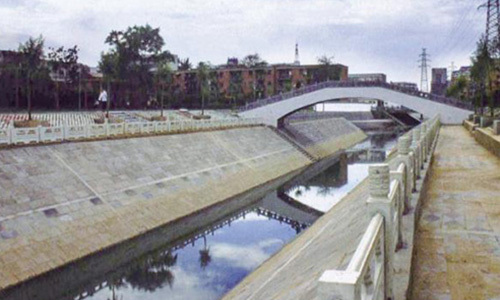What are the advantages and operating characteristics of MBR flat membrane treatment technology?
Published Time:
2022-06-29
MBR flat-sheet membrane and MBR membrane component unit (ultrafiltration membrane or microfiltration membrane) is a new type of wastewater treatment and reuse technology that combines membrane separation technology with biodegradation. All suspended solids and colloids are retained by membrane separation, instead of secondary sedimentation tanks, which increases the concentration of activated sludge in the aeration tank, improves the biodegradation rate, and reduces the discharge of excess sludge. MBR flat-sheet membrane treatment technology is a new type of wastewater treatment technology that is different from traditional treatment technologies. Membrane bioreactor (MBR) membrane treatment technology is a combination of membrane separation technology and traditional treatment technology, combining the advantages of both treatment technologies. Membrane bioreactor (MBR) is a new type of wastewater treatment technology that combines membrane separation technology with traditional activated sludge process. MBR flat-sheet membrane components with unique structures are placed in the aeration tank. After aerobic aeration and biological treatment, it is pumped through the filter membrane and then pumped out. The membrane separator is used to capture activated sludge and high molecular weight organic matter in the biochemical reaction tank, saving the secondary sedimentation tank. The concentration of activated sludge is significantly increased, the hydraulic retention time (HRT) and sludge retention time (SRT) can be controlled separately, and refractory substances can be continuously reacted and decomposed in the reactor. The advantages and operation characteristics of MBR flat-sheet membrane will be introduced below:

I. Advantages of MBR flat-sheet membrane treatment technology:
1. Wastewater can be directly treated and reused.
Due to the effective separation of the mixed liquid in the bioreactor by the hollow fiber membrane, sludge and wastewater can be completely separated, and the SS and turbidity of the wastewater can be close to zero. At the same time, due to the almost no loss of activated sludge, the concentration of activated sludge in the bioreactor is about 2 to 6 times that of the conventional method, and the nitrogen removal capacity is greatly improved.
2. MBR flat-sheet membrane treatment technology is stable in operation, simple in process, with less equipment, and small footprint.
The MBR process has a high concentration of activated sludge, a large equipment load, good resistance to fluctuating influent, and stable operation. This process can significantly reduce the capacity of the bioreactor aeration tank, reduce the size of the equipment and structure, save the primary sedimentation tank, and eliminate the need for the secondary sedimentation tank. Reduce the footprint of the system.
3. Long sludge service life and small amount of excess sludge.
When the sludge concentration is high and the influent load is low, the ratio of nutrients to microorganisms (f/m) in the system is low, and the sludge residence time is long. When f/m is maintained at a constant low level, the growth of activated sludge is close to zero, thus reducing the cost of excess sludge treatment.
4. Simple operation and convenient automatic control.
Since membrane separation can completely retain the activated sludge in the bioreactor, the hydraulic retention time (HRT) and sludge retention time (SRT) in the bioreactor can be completely separated, and can be controlled flexibly and stably. At the same time, it is easy to achieve automatic control and improve the automation level of wastewater treatment.
II. Operating characteristics of MBR flat-sheet membrane:
1. Immerse and stably place the membrane components in the reaction tank.
2. Low-pressure (suction or gravity) effluent, small system operating pressure, and low energy consumption.
3. Gas-liquid two-phase flow disturbance.
4. Long-term stable operation.
5. The membrane is not easily polluted, the membrane cleaning frequency is low, and the cleaning operation is convenient.





